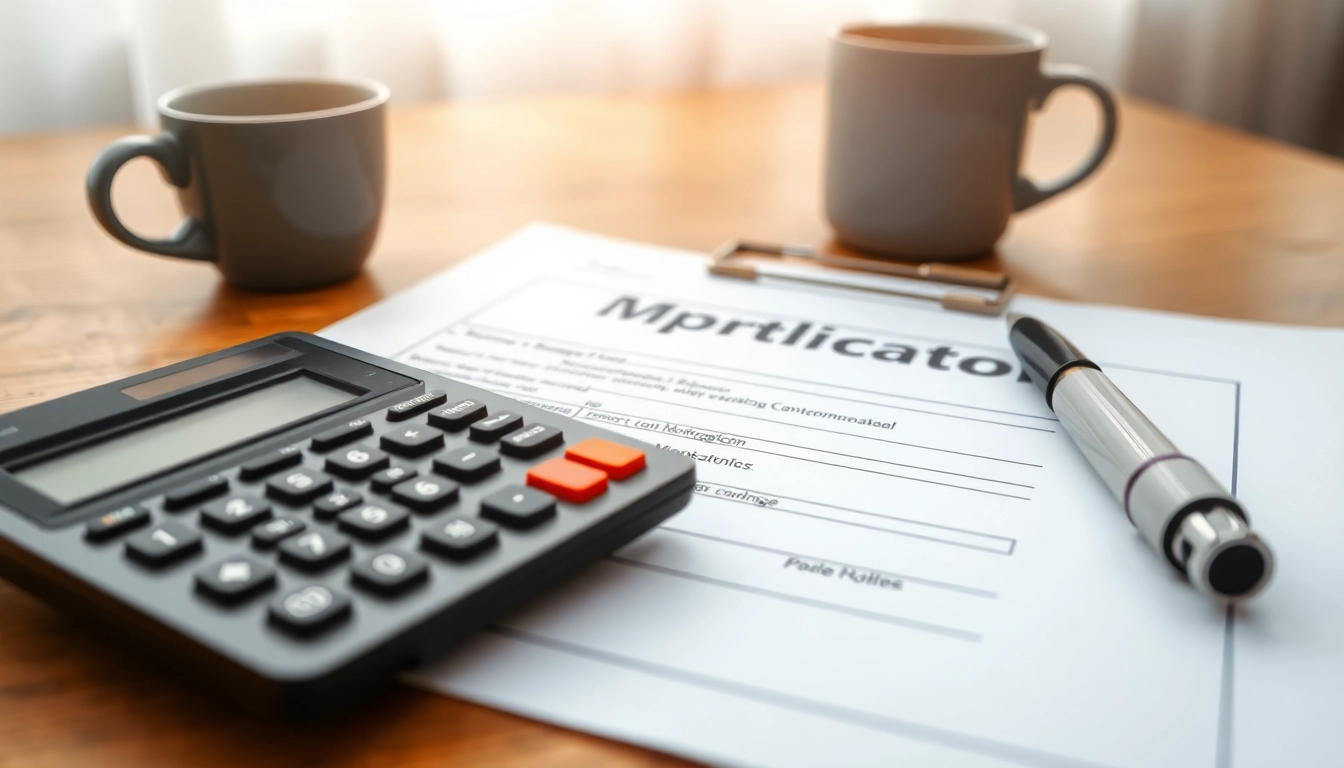Understanding the Mortgage Process for Lenders
The mortgage process for lenders is a labyrinthine journey that not only involves multiple stakeholders but also necessitates a deep understanding of intricate regulations, borrower needs, and risk management techniques. This comprehensive guide provides lenders with essential insights into each segment of the mortgage process—from initial pre-approval to the final closing stages. By equipping lenders with in-depth knowledge, they can streamline operations, improve customer experience, and minimize risks throughout the mortgage lifecycle.
Key Stages in the Mortgage Journey
The mortgage process typically unfolds over several key stages. Understanding these stages is critical for lenders in order to effectively manage expectations and guide borrowers. The main stages include:
- Pre-Approval: This is the first significant phase where lenders assess a borrower’s financial situation, which paves the way for a successful mortgage application.
- House Shopping: After pre-approval, borrowers embark on the journey of finding the ideal property, with lenders often in the background providing necessary support.
- Mortgage Application: This involves the borrower formally applying for a loan, which includes substantial documentation and credentials.
- Loan Processing: Lenders process the application, verify the information, and assess risk factors associated with the loan.
- Underwriting: This is the stage where the lender evaluates the borrower’s creditworthiness and the risk of approving the loan.
- Closing: The final stage where all documents are signed, and the loan is officially granted to the borrower.
The Importance of Documentation
Documentation is the backbone of the mortgage process. For lenders, it is crucial to ensure that all documents are accurately gathered, verified, and processed. Key documents often include:
- Proof of Identity: Driver’s license, social security number.
- Income Verification: Pay stubs, tax returns, W-2 forms.
- Credit History: A detailed report from credit bureaus helps assess the borrower’s creditworthiness.
- Property Documents: Information regarding the property being purchased and its current valuation.
By maintaining a systematic approach to documentation, lenders can significantly reduce the risk of processing delays and errors.
Common Pitfalls to Avoid
In the realm of mortgage lending, pitfalls can be detrimental to both lender and borrower perceptions and outcomes. Common challenges include:
- Poor Communication: Ensure consistent communication with borrowers to manage their expectations and avoid confusion.
- Inadequate Preparation: Failing to prepare for potential complications can lead to loan processing delays.
- Neglecting Due Diligence: Incomplete or rushed assessments can lead to higher borrower risk profiles and financial losses.
Pre-Approval: Laying the Groundwork
The Pre-Approval Process Explained
Pre-approval is a critical step for both lenders and borrowers. It involves analyzing the borrower’s financial situation to determine how much loan amount they are eligible for. Typically, this process includes an evaluation of:
- Credit score
- Debt-to-income ratio
- Employment history
Lenders provide a pre-approval letter detailing the loan amount the borrower qualifies for, which not only enhances credibility with sellers but also helps borrowers set realistic home-buying expectations.
Benefits of Being Pre-Approved
The pre-approval process presents several advantages:
- Faster Transactions: With pre-approval, the time taken for processing an application is significantly reduced.
- Enhanced Credibility: Sellers perceive pre-approved buyers as serious and capable, which can provide leverage in negotiations.
- Personalized Loan Offers: Pre-approval helps lenders tailor loan products to meet a borrower’s specific needs.
Necessary Documentation for Pre-Approval
Documentation for pre-approval mirrors what will be required in the actual application process, albeit usually in a simpler form. Essential documents typically include:
- Pay stubs
- Bank statements
- Social Security number
- Information on additional debts
House Shopping: Navigating the Market
How to Effectively Search for Properties
Once borrowers are pre-approved, the journey of house shopping begins. Here, lenders can add value by advising them on how to search effectively:
- Online Listing Platforms: Utilizing websites and apps dedicated to real estate.
- Local Open Houses: Attending open houses to gain a tangible understanding of the market.
- Networking: Connecting with local real estate agents can lead to opportunities off-the-market.
Ways to Evaluate Potential Homes
Evaluating homes requires a detailed approach. Key factors include:
- Location and neighborhood dynamics
- Property condition and age
- Future resale value, based on local economic trends
- Accessibility to essential services and amenities
Working with Real Estate Agents
Real estate agents can facilitate the house hunting process significantly by providing insights relevant to market trends. Establishing good partnerships with agents ensures that lenders can get timely updates about new listings or price reductions.
Application and Processing Steps
What to Expect During the Application Process
During the application stage, borrowers submit their formal loan applications. Lenders must be skilled at guiding them through the application to ensure accuracy and completeness. Common steps include:
- Filling out a detailed loan application form
- Collecting financial documents
- Disclosing all necessary personal information
- Generating the loan estimate to clarify terms and conditions
Understanding Underwriting and Its Role
Underwriting is a pivotal phase that allows lenders to determine borrower eligibility. Underwriters analyze the information provided to assess the risk of approving the loan. Key factors in this evaluation include:
- Credit history and scores
- Employment and income verification
- Debt-to-income ratios
- Appraisal of the property to establish market value
Common Issues During Loan Processing
Understanding common issues during loan processing can help lenders pre-empt delays. Frequent hurdles include:
- Defective documentation
- Slow responses from borrowers for needed information or additional documentation
- Unexpected changes in borrower’s credit status or financial situation
Closing: Finalizing the Mortgage
Key Aspects of the Closing Process
The closing process marks the culmination of the mortgage journey. It involves detailed documentation which both parties—the lender and the borrower—need to undertake. Key components include:
- The Closing Disclosure that outlines all fees and the total loan amount
- Reviewing the deed of trust and ensuring all terms are clear
- Signing the promissory note, affirming the borrower’s obligation to repay
Final Checks Before Signing
Before proceeding to sign, both parties should ensure all details align with previous discussions. Critical checks include:
- Confirming loan amounts are correct
- Reviewing any changes since the last agreement
- Verifying funding instructions are accurate
Post-Closing Responsibilities for Lenders
Once the mortgage is closed, lenders are not off the hook. They have ongoing responsibilities, such as:
- Servicing the loan, which may include collecting payments and managing escrow accounts
- Providing borrowers with accurate statements and tax documents
- Engaging in communication to address any potential borrower concerns and ensuring compliance with regulations
In conclusion, understanding the mortgage process is crucial for lenders aiming to provide exceptional service and mitigate risks effectively. Each stage requires thoroughness, diligence, and an understanding of the financial implications involved. By mastering the mortgage process, lenders position themselves as reliable partners in the home-buying journey.



